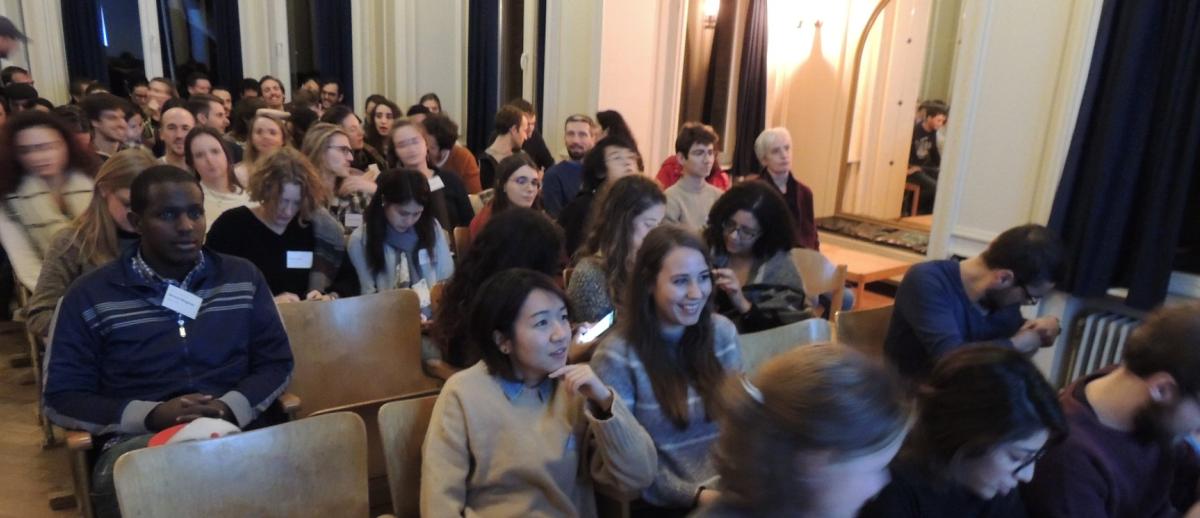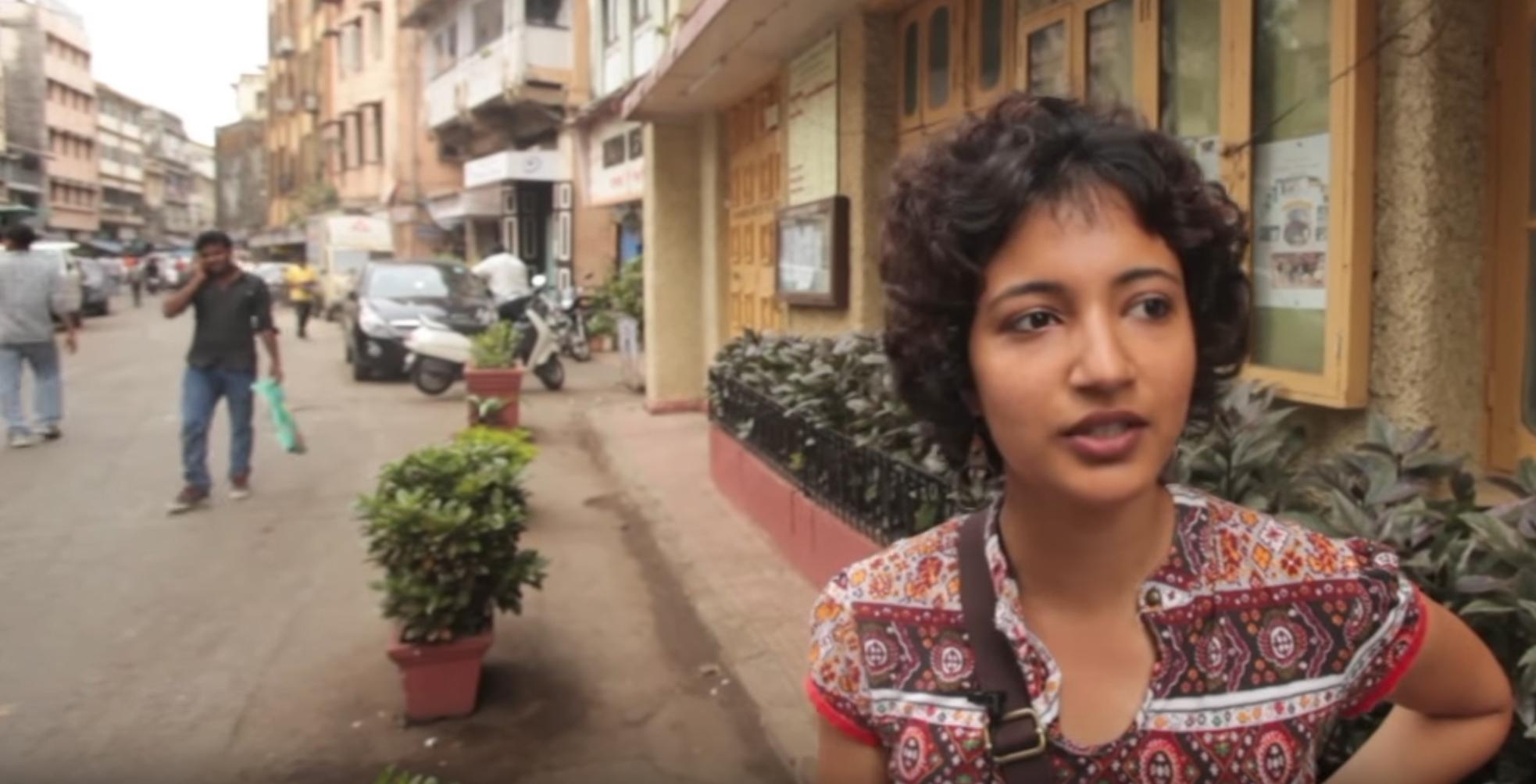Attracting a Diversified Student Body: Opportunities and Constraints
archive


Image source: EMGS
Attracting a Diversified Student Body: Opportunities and Constraints
A common ambition of scholars engaged in Global Studies programs is to confer and produce new, innovative knowledge characterized by a multiplicity of perspectives. This includes the endeavor to curb the influence of long-established paradigms and combat western-centeredness. One way to achieve this multi-perspectivity is to involve diverse groups of people in Global Studies teaching and knowledge production environments. Obviously, the diversity of scholars plays an important role in this regard. But also, a diversified student body may contribute to these ambitions, as students bring diverse perspectives into classroom discussions and may feed new perspectives into Global Studies research. But the question is, how to achieve a diversified student body?
In the following I will give some insight on what has been achieved with respect to a regionally diversified student body in the Erasmus Mundus Masters program in Global Studies (EMGS).1 The focus, however, is not solely on achievements but also on some of the challenges to diversifying the composition of this student body.
The EMGS Masters program was set up in 2005 as a transnational higher education consortium consisting of the universities of Leipzig (Germany), Vienna (Austria), Wroclaw (Poland) as well as the London School of Economics and Political Sciences (United Kingdom).2 The incentive for establishing a joint study program came from the European Union’s call for application under the Erasmus Mundus program, one of whose main aims is to promote Europe “as a center of excellence in learning”3 to non-European students. The need arose out of the belief that Europe’s political and commercial success in the world is dependent on future decision-makers in “third countries [EU terminology for non-EU countries] having a better understanding of, and closer ties with, Europe.”4 For this purpose higher education institutions located within Europe have been encouraged to create a “distinct European added value” through commonly offered study programs including at least three European universities located in three different countries. The EU provided from the very beginning a limited number of highly endowed scholarships for some of the non-EU students studying in the EMGS program, which played an important role in ensuring that EMGS could attract and enroll students from many different parts of the world. However, measuring the concrete degree of “internationality” of the student body of the EMGS program is difficult, considering that it is also commonly offered by a set of participant universities in different parts of the world outside of Europe.5 Viewed from Germany (Leipzig University serves as the project coordinator of the program) and defining internationality as the number of non-German students studying in the program, the figure amounts to around 70%. Compared to other Global Studies programs, this presumably represents a very high degree of internationality.
Seen from the perspective of the other EMGS founding members and thus from an Austrian, British, or Polish perspective, the international composition of the students amounts to more than 95%. This is an even more impressive figure and might be unparalleled as compared to other Global Studies programs.
If one takes a broader, worldwide look at the composition of students’ regional origin, one finds that certain regions are more prominently represented than others. Some of these disparities are already present in the application pool: there are some countries from which so far no applicant has applied for the EMGS program.6 Indeed, there are 60 countries from which no application has been received so far. This certainly represents an impressive fact, namely that the EMGS program has received applications from more than two thirds of all countries in the world. But it nevertheless also illustrates that theoretical accessibility to the program cannot be attained in reality. The reasons why no applications have yet been received from certain countries are manifold. They might involve difficulties with internet access, lack of proficiency in English (which makes it impossible to access the information about the study program, provided in English only), lack of financial resources to apply for the program,7 lack of interest/or familiarity with study abroad options, social restrictions, and of course also political hindrances.8 In a few countries there might simply be no qualified applicant.
[T]heoretical accessibility to the program cannot be attained in reality. The reasons why no applications have yet been received from certain countries are manifold.
By contrast, there are some countries, like Ethiopia, from which the program has received many applications but from which the participation rate is nevertheless rather low. Since so far no Ethiopian applicant participated in the program without being awarded an Erasmus Mundus scholarship, it can be assumed that many Ethiopians face financial constraints on studying in Europe. Yet, this is only part of the story. Many of the applicants from Ethiopia also do not meet the admission requirements (which include a Bachelor degree with some relevance to Global Studies) and/or their motivations or previous educational training may have been too practically-oriented. In principle it would be possible to train these applicants in a way that would allow them to meet the requirements, but the EMGS program does not have sufficient capacity to do so. This problem is reinforced by the mandatory mobility and the demanding nature of the program. From the very beginning students need to be able to meet the study requirements, which means that they need the ability to adjust easily and quickly to different (academic) environments. Generally speaking, this makes applicants who already have experience abroad more qualified for the program than those who don’t.

Former EMGS student Sayalee Karkare reflects on her experience with the program. (Source: YouTube)
No surveys about the socio-economic background of EMGS students have been conducted. But it is known that the spectrum of students’ socio-economic backgrounds is very broad, from elite levels of society to working class people. Nevertheless, since admission to the program is based on merit and does not consider socio-economic aspects9 it can be assumed that—no matter the individual family background or, more broadly, the society they live in—applicants that come from privileged backgrounds have better chances to afford the program, even without being awarded an Erasmus Mundus scholarship. They generally also have better chances of access in terms of necessary infrastructure like a personal computer and internet account, or prior training for such EMGS program requirements as drafting eloquent motivation essays. Generally speaking, they may have greater access to professional and study abroad experience prior to application.
To sum up, one can attest that the EMGS program is characterized by a regionally and socio-economically diversified student body, but, as with other programs, the chances for admission are not equal for all applicants. There are barriers about which one may fairly ask whether they can ever be removed. For organizers of study programs, efforts that can be made to increase equal access are very limited since they have little influence on changing equal access to good schools and higher education opportunities in applicant countries, both of which would be major pre-conditions for improving access.
Moreover, in recent decades higher education in many countries has become more excellence- and performance-oriented. Thus, program organizers have become more and more pressured to insure fast completion rates and low drop-out rates among their students. This in turn might influence institutions’ willingness to take risks and admit students whose academic potential appears unpromising. The situation becomes exacerbated if programs are part of third party funding schemes (like Erasmus Mundus) that foresee admitting only students of high caliber.
For organizers of study programs, efforts that can be made to increase equal access are very limited since they have little influence on changing equal access to good schools and higher education opportunities in applicant countries...
There are of course heated debates about improving equal access to higher education, but to be taken seriously and implemented effectively, this would imply much more in the way of support structures—to take just one of countless examples, pre-university courses for single mothers.
Therefore, beyond strategies to increase the equal access, what should and can be done by program organizers is to make parts of program curricula accessible to everyone interested, even beyond academic circles. This could for example include things like providing free access to online courses. But here language barriers might arise, so therefore it would be important to also encourage scholars, and especially students and alumni, to share course content in many different languages and for different audiences. A further strategy might be to establish contacts with scholars from universities with little expertise in global, transnational, and related studies. What would be important in this regard is to not only confer knowledge on other people but to make sure that their voices are heard and that the endeavor to produce new, innovative knowledge, characterized by a multitude of perspectives, can be met.
1. For further information on this Master, please see: www.globalstudies-masters.info.
2. In the course of time, the number of partner universities has been continuously expanded. In the year 2020 the program is offered by 15 universities being located in different parts of the world. The European Universities serve as the degree-issuing universities and represent thus the core of the program whereas the non-European universities complement with teaching offers.
For on overview of all partner-universities see: https://gesi.sozphil.uni-leipzig.de/joint-projects/emgs/members/
3. COMMUNICATION FROM THE COMMISSION TO THE EUROPEAN PARLIAMENT AND THE COUNCIL ON STRENGTHENING COOPERATION WITH THIRD COUNTRIES IN THE FIELD OF HIGHER EDUCATION, Brussels, 18.7.2001, COM(2001) 385 final, page 3.
4. Ibid
5. Addis Ababa University (Ethiopia), Dalhousie University (Canada), Fudan University (China), Jawaharlal Nehru University (India), Macquarie University (Australia), Otago University (New Zealand), University of California at Santa Barbara (USA), University of Stellenbosch (South Africa), University of Yaoundé I (Cameroon)
6. These countries include Andorra, Angola, Antigua and Barbuda, Bahamas, Bahrain, Benin, Brunei, Burkina Faso, Cabo Verde, Chad, Comoros, Congo, Côte d'Ivoire, Cuba, Djibouti, Dominica, El Salvador, Equatorial Guinea, Fiji, Gabon, Grenada, Guinea, Guinea-Bissau, Holy See, Iceland, Kiribati, North Korea, Kuwait, Laos, Lesotho, Libya, Liechtenstein, Maldives, Mali, Marshall Islands, Mauritania, Mauritius, Federated States of Micronesia, Monaco, Namibia, Nauru, Niger, Oman, Palau, Panama, Papua New Guinea, Qatar, Saint Kitts and Nevis, Saint Lucia, Saint Vincent and the Grenadines, Samoa, San Marino, Sao Tome and Principe, Saudi Arabia, Seychelles, South Sudan, Suriname, Swaziland, Tonga, Tuvalu, United Arab Emirates, Vanuatu.
7. The costs for the application comprise expenses for certification and translation of documents, for English language proficiency test certificates as well as shipping costs.
8. See also Loeke, Konstanze (2019): “Who is interested in studying a Master’s in Global Studies?” In: Loeke, Konstanze and Middell, Matthias (eds.): The Many Facets of Global Studies. Perspectives from the Erasmus Mundus Global Studies Program. Leipzig, Leipzig University Press 2019. This article provides more detailed information on the composition of the EMGS application pool between 2005-2015.
9. It would be in fact difficult to take a decision on socio-economic needs on a global scale, and to answer for example questions like: is the German applicant from a working-class family background with low family income more in the need than the Indian applicant from a higher middle class family?



